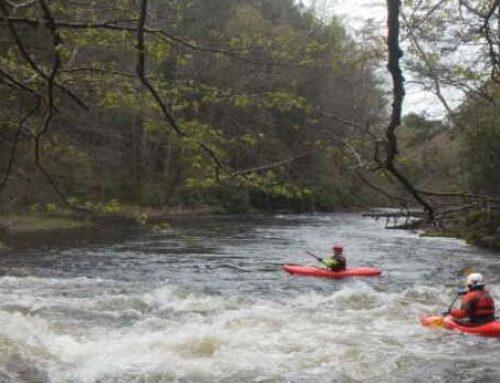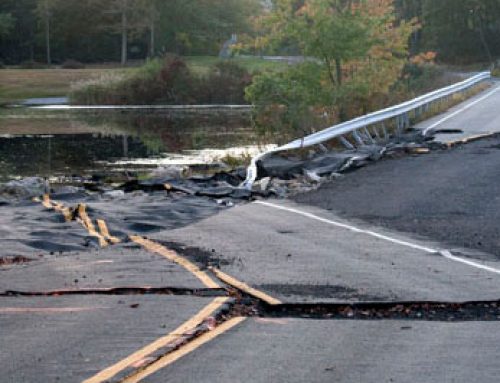It’s the time of year we look forward to being out on the river to renew and recharge after a challenging week; I’ve never contemplated the content of an email while navigating a rapid. I’ve enjoyed the Esopus Creek and what the town of Phoenicia offers since 1978; it’s just good for my soul.
But what do we do when recreational releases get cancelled? Who do we speak to? Do calls, emails and social media work? Fortunately, something is in the works to improve cold water management, the key parties are happily talking and your input would be greatly appreciated as we try propose and finesse these changes.
I was presented with an opportunity late last summer that looked like a promising avenue for promoting river recreation that could fairly address more reliable recreational releases. As a result, I became active in the AWSMP Stream Access and Recreation Working Group and I think we have a fantastic opportunity to enjoy more reliable whitewater releases on the Esopus Creek. I drafted a proposal “Budgeting Cold Water Reserves during periods of reduced insolation” to see if it’s feasible to hold back some water in the reservoir and reduce Esopus Creek Water levels when it doesn’t endanger the ecosystem; not too low to trap fish or risk the heat of the sun.
This proposal is transparent and available on Google Docs for anyone to read here. Again, I welcome your input. Please feel free share your thoughts via email (mshmovie@gmail.com) or phone (845-418-4194) so together we can more reliably recharge our souls on the Esopus Creek and in the Town of Phoenicia.
I’m providing the minutes from the last meeting for the work group below to keep the club informed.
See you at the Esopus Whitewater Funfest.
[youtube https://www.youtube.com/watch?v=V2H7IdB35XA&w=560&h=315]
AWSMP Stream Access and Recreation Working Group Meeting Minutes
4/16/2013
10:00am to 12:00pm
AWSMP Office, Phoenicia, NY
In attendance:
Brent Gotsch, CCE Ulster County
Aaron Bennett, Ulster County Department of the Environment
Russell Yess, Trout Unlimited
David Gilmour, Gilmour Planning
Kathy Nolan, Catskill Mountainkeeper, TU, UC Trails Advisory Commission
Marc Hollander, KKCNY
Martie Gailes, Shandaken Recreation Committee
Harry Jameson, Town Tinker Tubes
Mary McNamara, Lower Esopus Working Group
Mike Flaherty, DEC, via phone
Shandaken Tunnel Meeting Debriefing
Overall everyone was very satisfied with the meeting and what they learned. There was a request to know more about the Operation Support Tool (OST) and how it works. Group found it interesting that the agencies in charge wanted very similar goals such as working within the current framework to get the best release strategy possible and not formulate new legislation. DEC representatives acknowledged that they could more clearly spell out in the permit how a decision is made and what goes into it. This can change because of emergency or unusual situations but overall they would like to have more transparency and stakeholder engagement.
There was a question about constraints to budgeting water releases for future whitewater events that would not harm the needed amount for healthy fisheries. It was explained that timing in these situations was key. It takes time for water to go down the tunnel to the portal and the resulting flow is not instantaneous. It was asked if ramping down for 1-2 hours a night would allow for increased whitewater potential. It was explained that they need about 150-200 cfs every day in the summer and that the additional 10-20 cfs would not make much of a difference towards savings of cold water. Potential formula to help figure this out would be how long it takes to ramp up/down the tunnel to ensure that no sunlight hits it (to help preserve cold water at night when temperatures are cooler so that could be used during the day for fisheries/whitewater). It was acknowledged that this may be something to try. M. Flaherty will speak with Brennan Terrier about this potential.
It was suggested that this group prepare a draft memo to be given to DEP and DEC on the idea of ramping up and down the tunnel releases to preserve cold water and to provide an idea for the experiment with appropriate numbers (for amount of cfs, flow rates, flow regime, etc.) for DEP and DEC officials to review. Suggested that experiment be done during a wet year to help offset the potential adverse impacts it may have.
Potential exists to have the gates at the tunnel open and close automatically so that no additional staff time is needed. Perhaps OST can be put into a spreadsheet to help with this determination and see what can and cannot be done.
As part of the SPDES permit DEP is required to have a plan on how it will keep a cold water reservoir for the summer. Measurements to determine this are taken in mid-June and the report is finalized and submitted in late-June.
Another consideration to take into effect is the void in the reservoir for flood control. It was stated that between March 15 and May 1 DEP needs to have the reservoir about 90% full and after that they like it to be as close to 100% full as possible.
How long does it take to water to get from the tunnel outlet to the reservoir? This is a key question that should be answered before too much time and effort is put into drafting the memo regarding ramping down during evening hours to preserve the cold water. Mike F indicated he may have this answer somewhere and would try to come up with the number of hours. If the travel time of the coldwater from Schoharie intake, through the tunnel, and down to the Ashokan Reservoir is close to 24 hours, then the evening ramp–downs would not really accomplish much.
It was brought up that some in the angling community are concerned about what ramping the tunnel up or down may have on the fish population. It is important to keep them in the loop on what is going on.
M. Hollander has agreed to begin drafting a memo in a Google document format and invite the working group members to participate. He is also willing to take anyone on the working group out for a day of whitewater boarding or kayaking to experience what it is like on the Esopus.
Shandaken Parks and Recreation Comprehensive Master Plan
M. Gailes and D. Gilmour gave a presentation on the Town of Shandaken’s newly updated Parks and Recreation Comprehensive Master Plan (available on Town of Shandaken website). The plan had its genesis when the Shandaken supervisor asked the Shandaken Parks and Recreation Committee to determine how to sustain the parks in the town. They designated park managers but realized that in order to get grant funding they almost always had to have a master plan. The committee got a Hudson Valley Greenway Grant to hire Gilmour Planning to create a plan. The committee also put out a questionnaire that was distributed to town residents.
Three main points of interest came out of the survey:
- Strong interest in swimming and swimming pools.
- Town is uneasy about this because of liability and maintenance issues associated with swimming pools.
- Strong interest in creating more walking, biking, hiking trails for all user levels.
- Strong interest in increased access to streams.
Plan is a ten year plan and is recommended that it be reviewed every 5 years and updated. The plan looks at current facilities, trends and opportunities as well as community needs, etc. It also develops courses of action, activities, expansion of recreation areas, fees, etc.
Layout of plan is as follows:
- Introduction
- Community Characteristics
- Available facilities groups
- Service Standards
- Tracts and linear parks
- Signage (signage throughout town was inventoried)
- Detailed look at each town owned facility
Looked at 2010-2011 AWSMP Stream Access and Rec survey for needs across Ashokan Watershed when formulating plan.
During discussion it was found that there were a lot of potential opportunities to partner with AWSMP to implement some of the plan’s recommendations. For instance, access to the Esopus Creek at Big Indian Park or other trails and potential points of access along streams. Question becomes how do you design an access point/trail etc. and not negatively affect the stream.
D. Gilmour is working with CCE through the Complete Streets program and is looking for ways to connect communities, both their indoor and outdoor environments and using access points and trails is a great way to accomplish some of those goals.
Plan has been reviewed by Town board and will be considered for adoption during its monthly meeting in May.
Discussion of the group came to the agreement that another benefit would be for the AWSMP Stream Access and Rec working group to develop a set of rules/etiquette for all recreational users on stream (boaters, tubers, anglers, etc.) so all can enjoy the stream. These rules can be incorporated into signage, kiosks, and/or factsheets.
It was also suggested that the Town consider the possibility of keeping title to some of the flood buyout properties and develop them into multiuse stream access points for boating, kayaking, fishing, etc. Someone needs to approach Rob Stanley regarding this and to take a closer look if any of the properties have such potential.
Other
Monday, April 29, 2013: a fundraiser for the Shandaken Parks and Rec Committee will be held at the Emerson Resort and Spa in Mount Tremper. Tickets are being sold for a roast beef dinner. Tickets are $15/person and all proceeds go to the committee for recreation projects. Also a “Fishing Frenzy” will be held over Memorial Day weekend where the Parks and Rec Committee will have local youth who come to the event get a free fly fishing rods to keep as well as instruction and an opportunity to fish on the nearby stream. Will be held in the Simpson mini-park.
Next Steps
M. Flaherty will contact Brennan Terrier about idea related to differing release regime and on time it takes to get from the tunnel outlet to the reservoir
M. Hollander will draft a memo in Google document format that others can view and edit. This will eventually be shared with agency representatives from DEC, DEP, et al.
Someone needs to approach Rob Stanley regarding this and to take a closer look if any of the properties have such potential. If anyone on this working group is interested in taking this on please let either Brent G. and/or Aaron B. know. Contact Brent G. for appropriate contact information.
Next Meeting
TBA. Approximately September 2013.






